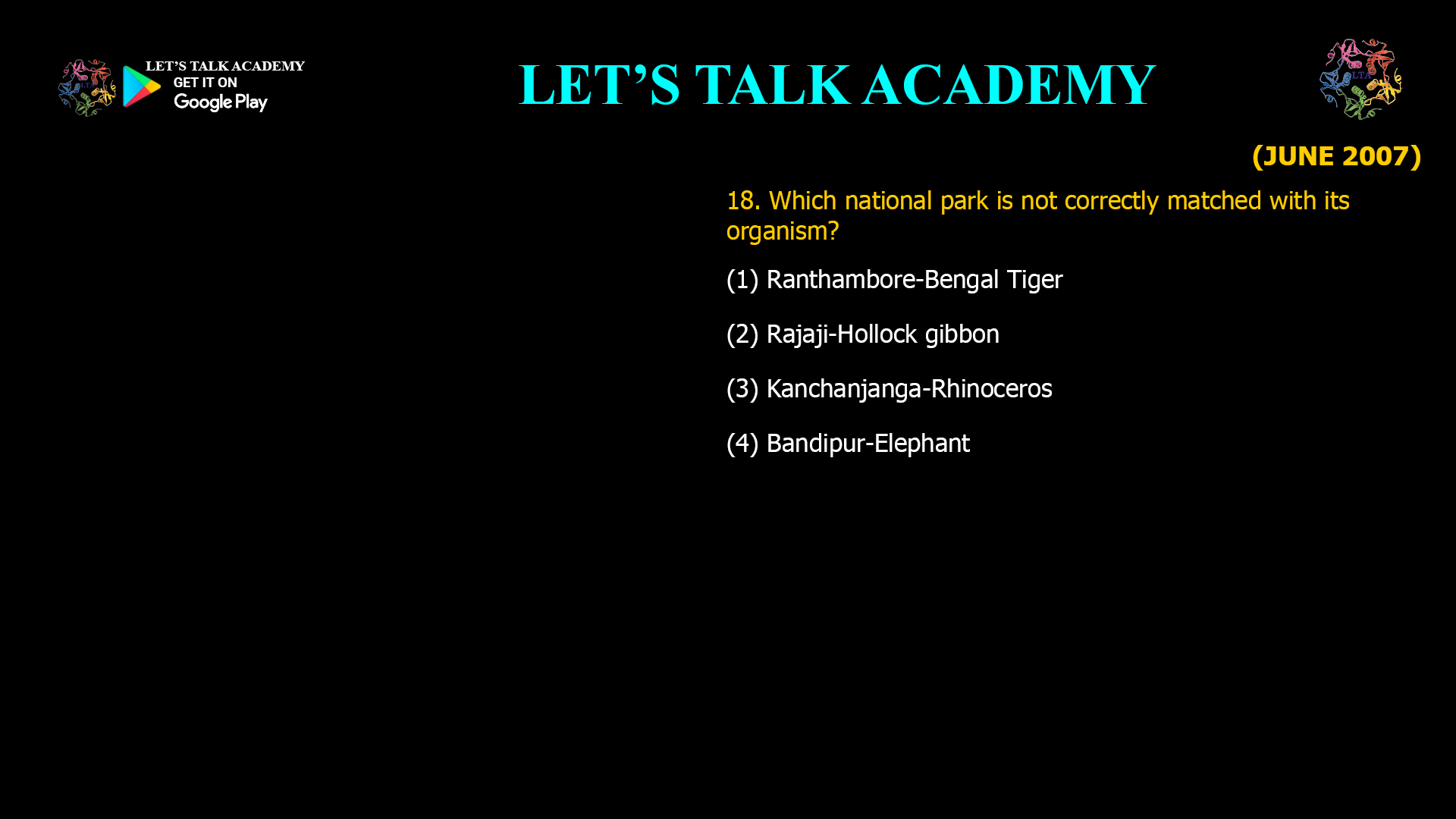- Which national park is not correctly matched with its organism?
(1) Ranthambore-Bengal Tiger
(2) Rajaji-Hollock gibbon
(3) Kanchanjanga-Rhinoceros
(4) Bandipur-ElephantOption Analysis
-
(1) Ranthambore – Bengal Tiger:
Ranthambore National Park in Rajasthan is world-renowned for its population of Royal Bengal Tigers. It is one of the best places in India to spot these majestic big cats in the wild, and the park is often called the “capital of the Royal Bengal Tigers”123568. -
(2) Rajaji – Hollock Gibbon:
Rajaji National Park, located in Uttarakhand, is famous for elephants, tigers, leopards, and a wide range of birds, but it is not known for the Hoolock Gibbon. The Hoolock Gibbon is found in the forests of Northeast India and not in Rajaji National Park. -
(3) Kanchanjanga – Rhinoceros:
Kanchanjanga National Park, situated in Sikkim, is known for its high-altitude Himalayan biodiversity, including snow leopards, red pandas, and Himalayan black bears. The Indian Rhinoceros is not found here; it is primarily associated with Kaziranga and Pobitora National Parks in Assam. -
(4) Bandipur – Elephant:
Bandipur National Park in Karnataka is well-known for its large population of Asian elephants and is a key part of the Nilgiri Biosphere Reserve.
Conclusion: The Incorrect Match
The option that is not correctly matched is:
(3) Kanchanjanga – Rhinoceros
Kanchanjanga National Park does not have the Indian Rhinoceros; this species is found in Kaziranga and other parks in Assam, not in the high-altitude Himalayan region of Kanchanjanga.
Correct answer:
(3) Kanchanjanga – Rhinoceros -




2 Comments
Kajal
November 6, 2025Option 4 and 3
Akshay mahawar
November 19, 2025B is the correct answer hillock gibbon is key species of kajiranga